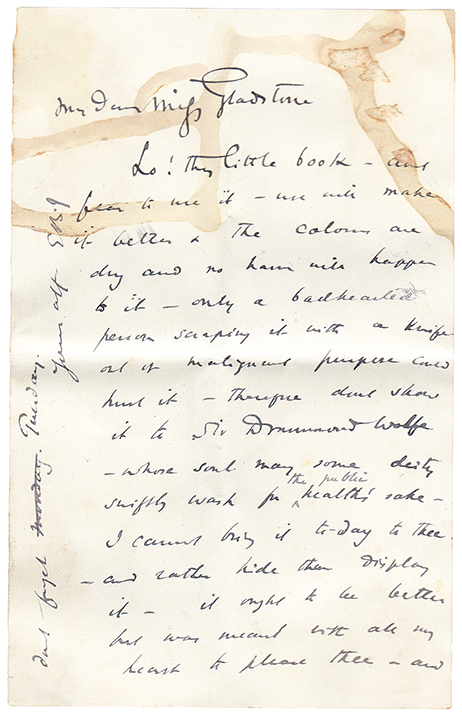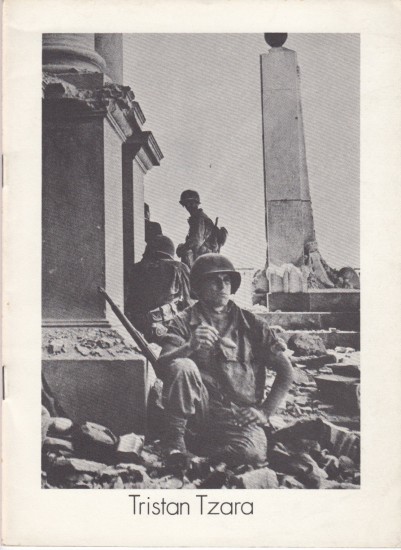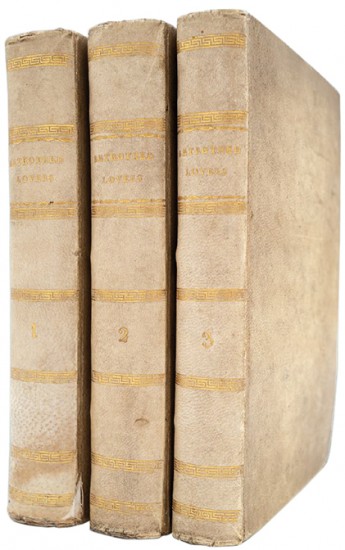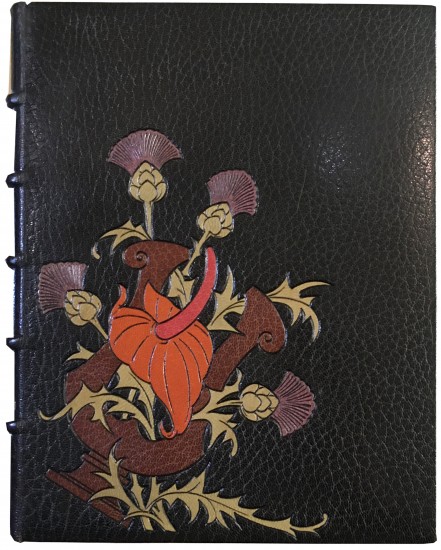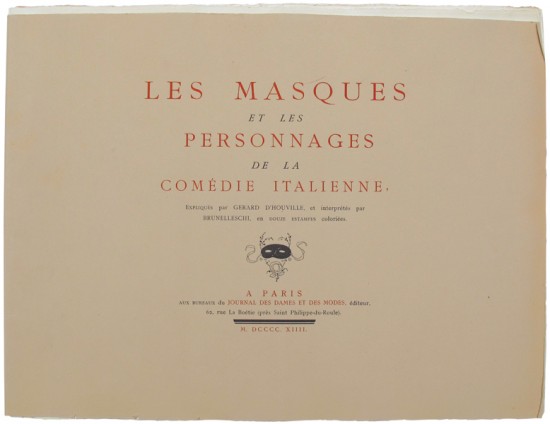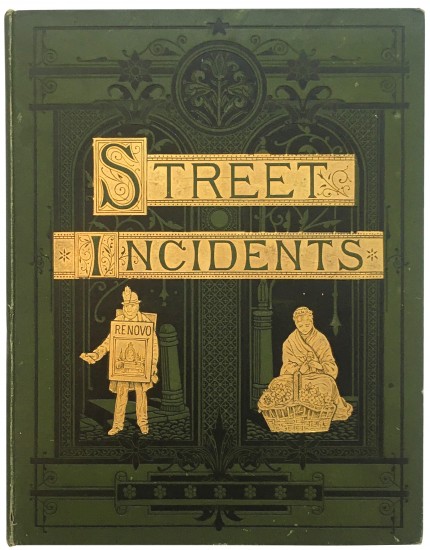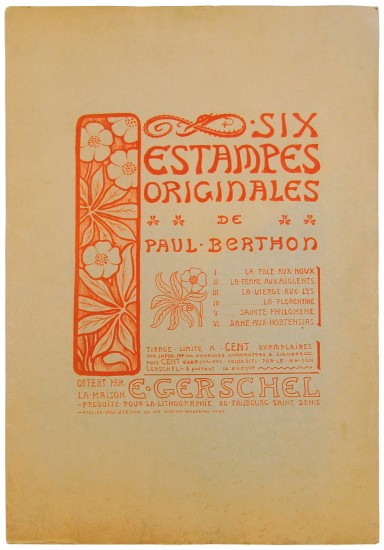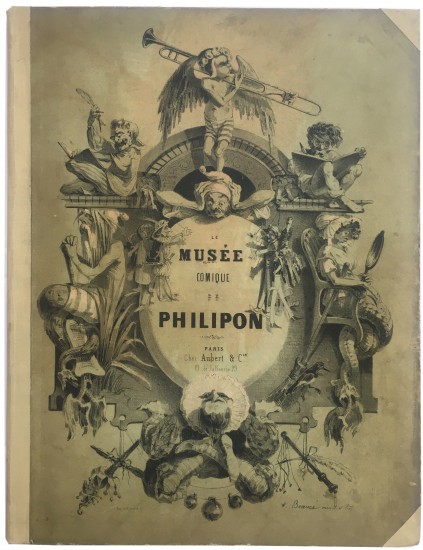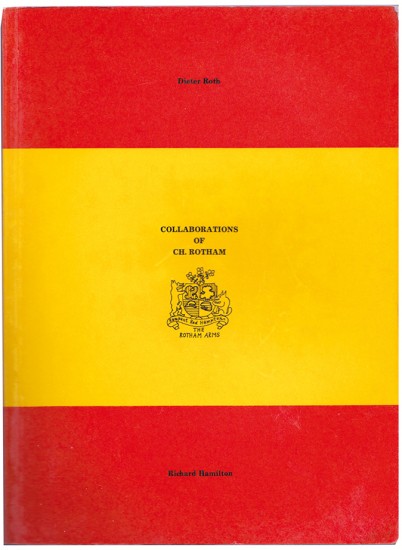Ausgewählte Lieder für eine Singstimme mit Begleitung des Pianoforte, Componirt von L. van Beethoven
Burne-jones, Sir Edward Coley
Leipzig / Berlin. C. F. Peters, Bureau de Musique. 1870. c.1870?
Sold
An exceptional gift: Beethoven's 'Lieder' in a binding painted by Sir Edward Burne-Jones and presented by him to Mary Gladstone, daughter of the Liberal Prime Minister.
This extraordinary work, painted and presented by Burne-Jones to Mary Gladstone and later bequeathed by her, has been associated for much of its existence with three families, each connected intimately with each other and with the artist himself.
Burne-Jones' painting for the cover is a beautiful confection incorporating many themes from Burne-Jones' larger oeuvre: headed 'Beethoven' in an elegant calligraphy in black oil, the title is supported and entwined with - at left - a five-petalled rose with two opening buds, seven sprays of leaf and thorns that climbs a support from the foot to the head of the board; at right is a painted panel with gilt and scarlet frame enclosing a figure in blue flowing robes with five-stringed lyre and floral coronet, a strolling minstrel in a blue-skied, hilly landscape with wild flowers, foliage and shrubs, identified at left of frame with vertical capitals as 'ORPHEUS'; beneath the frame in blue paint are Gladstone's initials 'M G' and the date '18 / 80'; at lower right in ochre paint - and in rather smaller lettering - is Burne-Jones' presentation: 'from EBJ'; the remaining surface of the board is covered with a dense decor of blue flowers - they appear to be agapanthus - providing a superb contrast against the white vellum and a context for the more overt elements of Burne-Jones' composition.
Mary Gladstone (1847 - 1927), daughter of William Ewart Gladstone, and his confidante, advisor and for a time private secretary, was one of a number of young, accomplished and fashionable women befriended by Edward Burne-Jones during the 1870s and 1880s. Many of those most important to Burne-Jones, among them Mary Gladstone, Frances Graham (daughter of his patron William Graham and likely the person who introduced Gladstone and Burne-Jones), May Morris (daughter of his friend William Morris) and Margaret Burne-Jones (the artist's daughter), feature in Burne-Jones' muse-filled painting 'The Golden Stairs' of 1880 and it was in 1880 that Burne-Jones presented this book to Gladstone. As an accomplished musician ('music was her passion', DNB) this collected edition of Beethoven's 'Lieder' would certainly have appealed to Gladstone - her 'great susceptibility to musical sounds' was noted by her father when she was barely more than a month old - but as the binding and presentation (and the provenance with the successive bequests of the book) suggest, it must have meant rather more. Beethoven too was of great significance for Gladstone, although she was overheard to say, and perhaps in relation to one of the 'Lieder' in the present volume: 'I know Beethoven wrote it like 'that', but I like to play it like this'.
Burne-Jones made few painted bindings and of those we can trace, all save those made for personal use, were created as gifts or for presentation. Frances Graham (later Mrs. John Horner), another of Burne-Jones' great friends, was the recipient of two painted bindings (copies of 'The Apocrypha' and 'The Book of Common Prayer') in 1879 and 1880, as was Helen Gaskell, recipient of the same works in the 1890s, but the only other painted binding we can locate was made by Burne-Jones for himself, on the binding for his own copy of Caxton's 1485 edition of Sir Thomas Malory's 'Morte d'Arthur'. Mary Gladstone's painted binding therefore represents something of a rarity, but more importantly, an indication of a profound sympathy between an artist then in his 50s and a woman, by 1880 with her father re-installed as Prime Minister in the same year, of considerable influence and social and political importance, albeit nearly 20 years his junior. The two had begun corresponding in the 1870s and their friendship was to endure, even after Gladstone's marriage in 1886 to the Reverend Harry Drew (Burne-Jones painted their daughter Dorothy in 1893), until the artist's death in 1898. It is worth noting too that the award of Burne-Jones' baronetcy was proposed in 1893 by Mary's father, William Gladstone, as outgoing Prime Minister; the award was made in the following year, 1894. In addition, Burne-Jones' last work and one about which he corresponded with Mary, was the stained glass window he designed to commemorate her father at the Church of St. Deiniol, Hawarden, completed a few weeks before the artist's death in 1898.
The artist presented the binding - as per the painted cover date - in 1880 and tipped-in to the front pastedown is Burne-Jones' affectionate and typically self-deprecating letter (undated) attesting to this fact: 'My Dear Miss Gladstone / Lo! Thy little book - and / bear to use it - use will make / it better & the colours are / dry and no harm will happen to it - only a badhearted / person scraping it with a knife / out of malignant purpose could / hurt it - therefore don't show / it to Sir Drummond Wolfe / - whose soul may some deity swiftly wash for the public health's sake - / I cannot bring it to-day to thee / - and rather hide than display / it - it ought to be better / but was meant with all my / heart to please thee - and /don't forget ['Monday' crossed through] Tuesday. Yours aff. E B-J'. Burne-Jones allusion to Sir Drummond Wolfe (the diplomat and politician Sir Henry Drummond Charles Wolff, 1830 - 1908, known as 'Lord Randolph's Jackal') suggests that the presentation was made in early 1880, as it was in that year, with Gladstone re-installed as Prime Minister, that Wolff, in consort with Lord Randolph Churchill and the two other members of the 'Fourth Party', made mischievious sport in Parliament: 'In the house he … was an indefatigable troublemaker; during the first four months of 1880 alone he delivered sixty-eight speeches and asked thirty-four questions … Gladstone foolishly played into the hands of the four by his readiness to reply to every question with laborious explanation' (DNB). Given Mary Gladstone's position vis-à-vis her father and given Burne-Jones' intimacy with Mary herself, it comes as little surprise that the two should discuss and share a joke - Burne-Jones' imputation to Wolff of 'malignant purpose' and suggestion that his 'soul' required washing by a 'deity' is clearly irony-laden - on such a subject.
Mary Gladstone died at Hawarden, the Gladstone family home inherited by her brother, on January 1st, 1927, 'having been particularly lively at dinner in the evening' on New Year's Eve and her book with its painted binding was bequeathed to Kathleen Alington as per the inscription on the front free endpaper. Alington (1908 - 1938) was the daughter of the 'hymn-writing Provost of Eton', Cyril Argentine Alington and his wife, the Hon. Hester Margaret Alington, whose father, the 4th Baron Lyttelton, was the widower of Mary Gladstone's aunt, Mary Glynne, the sister of Mary's mother Catherine; an indication of the close relations of the Gladstone and Lyttelton families - they have been described as always in each others' houses - was intimated in the marriage of the Glynne sisters on the same day in the same church. Alington, in turn, bequeathed the book to her close friend Elizabeth Wansbrough (1897 - 1995), née Lewis, as per the subsequent inscription. Wansbrough was the daughter of Sir George Lewis, the second baronet, and grand-daughter of the famed and feared lawyer Sir George Lewis (Burne-Jones himself, a close friend of the family, described him as ' … the terror of the aristocracy of England and [a man who] knows enough to hang half the Dukes and Duchesses in the Kingdom …', DNB concurs, adding that he was 'trusted to handle royal mistresses and maris complaisants'), the first baronet, and his wife, the formidable saloniste Lady Elizabeth Lewis. Lady Lewis and her husband were keen supporters, admirers and friends of Burne-Jones, commissioning paintings, entertaining and travelling with him (he painted a notable portrait of their daughter Katie) and he was involved with Lady Lewis' bohemian salon at their house in Portland Place. Lady Lewis, whose correspondence with Burne-Jones appears to have been destroyed, was complimented by Max Beerbohm thus: 'Good looks, good plays, good pictures and, above all, good music were for her no mere topic of conversation, but vital needs of her nature'. The Lewis' collection of paintings and other works passed to their daughter Katie who donated, sold or disposed of many, retaining those most important, particularly those of Burne-Jones and these in turn passed to her niece, Elizabeth Wansbrough. Wansbrough, who had inherited this painted binding from Alington, lived until nearly one hundred years of age, and it and her remaining paintings and drawings were consigned by her daughter, to auction.
Glladstone's painted binding was displayed at the Burlington Fine Arts Club in 1899, the year after Burne-Jones' death, in 'Exhibition of Drawings and Studies by SIr Edward Burne-Jones, Bart.' (described as 'Bound in vellum, with water-colour drawing on the front cover, Orpheus with his Lute … decorated with a climbing five-petalled rose') together with Frances Horner's 'The Apocrypha' (described in the catalogue as 'Bound in vellum, with pen and ink drawings on both covers') and Horner's manuscript 'Rubáiyát of Omar Khayám' with text by William Morris and six watercolours by Burne-Jones; no other books featured in the exhibition.
[see 'Exhibition of Drawings and Studies by Sir Edward Burne-Jones, Bart.' London, Burlington Fine Arts Club, 1899 ('no. 5 in the 'case of painted books and sketches'); see Wildman & Christian, 'Edward Burne-Jones: Victorian Artist-Dreamer', New York, 1998, pg. 243; see 'Victorian Pictures', Sotheby's London, 7th June, 1995, lot 153].
This extraordinary work, painted and presented by Burne-Jones to Mary Gladstone and later bequeathed by her, has been associated for much of its existence with three families, each connected intimately with each other and with the artist himself.
Burne-Jones' painting for the cover is a beautiful confection incorporating many themes from Burne-Jones' larger oeuvre: headed 'Beethoven' in an elegant calligraphy in black oil, the title is supported and entwined with - at left - a five-petalled rose with two opening buds, seven sprays of leaf and thorns that climbs a support from the foot to the head of the board; at right is a painted panel with gilt and scarlet frame enclosing a figure in blue flowing robes with five-stringed lyre and floral coronet, a strolling minstrel in a blue-skied, hilly landscape with wild flowers, foliage and shrubs, identified at left of frame with vertical capitals as 'ORPHEUS'; beneath the frame in blue paint are Gladstone's initials 'M G' and the date '18 / 80'; at lower right in ochre paint - and in rather smaller lettering - is Burne-Jones' presentation: 'from EBJ'; the remaining surface of the board is covered with a dense decor of blue flowers - they appear to be agapanthus - providing a superb contrast against the white vellum and a context for the more overt elements of Burne-Jones' composition.
Mary Gladstone (1847 - 1927), daughter of William Ewart Gladstone, and his confidante, advisor and for a time private secretary, was one of a number of young, accomplished and fashionable women befriended by Edward Burne-Jones during the 1870s and 1880s. Many of those most important to Burne-Jones, among them Mary Gladstone, Frances Graham (daughter of his patron William Graham and likely the person who introduced Gladstone and Burne-Jones), May Morris (daughter of his friend William Morris) and Margaret Burne-Jones (the artist's daughter), feature in Burne-Jones' muse-filled painting 'The Golden Stairs' of 1880 and it was in 1880 that Burne-Jones presented this book to Gladstone. As an accomplished musician ('music was her passion', DNB) this collected edition of Beethoven's 'Lieder' would certainly have appealed to Gladstone - her 'great susceptibility to musical sounds' was noted by her father when she was barely more than a month old - but as the binding and presentation (and the provenance with the successive bequests of the book) suggest, it must have meant rather more. Beethoven too was of great significance for Gladstone, although she was overheard to say, and perhaps in relation to one of the 'Lieder' in the present volume: 'I know Beethoven wrote it like 'that', but I like to play it like this'.
Burne-Jones made few painted bindings and of those we can trace, all save those made for personal use, were created as gifts or for presentation. Frances Graham (later Mrs. John Horner), another of Burne-Jones' great friends, was the recipient of two painted bindings (copies of 'The Apocrypha' and 'The Book of Common Prayer') in 1879 and 1880, as was Helen Gaskell, recipient of the same works in the 1890s, but the only other painted binding we can locate was made by Burne-Jones for himself, on the binding for his own copy of Caxton's 1485 edition of Sir Thomas Malory's 'Morte d'Arthur'. Mary Gladstone's painted binding therefore represents something of a rarity, but more importantly, an indication of a profound sympathy between an artist then in his 50s and a woman, by 1880 with her father re-installed as Prime Minister in the same year, of considerable influence and social and political importance, albeit nearly 20 years his junior. The two had begun corresponding in the 1870s and their friendship was to endure, even after Gladstone's marriage in 1886 to the Reverend Harry Drew (Burne-Jones painted their daughter Dorothy in 1893), until the artist's death in 1898. It is worth noting too that the award of Burne-Jones' baronetcy was proposed in 1893 by Mary's father, William Gladstone, as outgoing Prime Minister; the award was made in the following year, 1894. In addition, Burne-Jones' last work and one about which he corresponded with Mary, was the stained glass window he designed to commemorate her father at the Church of St. Deiniol, Hawarden, completed a few weeks before the artist's death in 1898.
The artist presented the binding - as per the painted cover date - in 1880 and tipped-in to the front pastedown is Burne-Jones' affectionate and typically self-deprecating letter (undated) attesting to this fact: 'My Dear Miss Gladstone / Lo! Thy little book - and / bear to use it - use will make / it better & the colours are / dry and no harm will happen to it - only a badhearted / person scraping it with a knife / out of malignant purpose could / hurt it - therefore don't show / it to Sir Drummond Wolfe / - whose soul may some deity swiftly wash for the public health's sake - / I cannot bring it to-day to thee / - and rather hide than display / it - it ought to be better / but was meant with all my / heart to please thee - and /don't forget ['Monday' crossed through] Tuesday. Yours aff. E B-J'. Burne-Jones allusion to Sir Drummond Wolfe (the diplomat and politician Sir Henry Drummond Charles Wolff, 1830 - 1908, known as 'Lord Randolph's Jackal') suggests that the presentation was made in early 1880, as it was in that year, with Gladstone re-installed as Prime Minister, that Wolff, in consort with Lord Randolph Churchill and the two other members of the 'Fourth Party', made mischievious sport in Parliament: 'In the house he … was an indefatigable troublemaker; during the first four months of 1880 alone he delivered sixty-eight speeches and asked thirty-four questions … Gladstone foolishly played into the hands of the four by his readiness to reply to every question with laborious explanation' (DNB). Given Mary Gladstone's position vis-à-vis her father and given Burne-Jones' intimacy with Mary herself, it comes as little surprise that the two should discuss and share a joke - Burne-Jones' imputation to Wolff of 'malignant purpose' and suggestion that his 'soul' required washing by a 'deity' is clearly irony-laden - on such a subject.
Mary Gladstone died at Hawarden, the Gladstone family home inherited by her brother, on January 1st, 1927, 'having been particularly lively at dinner in the evening' on New Year's Eve and her book with its painted binding was bequeathed to Kathleen Alington as per the inscription on the front free endpaper. Alington (1908 - 1938) was the daughter of the 'hymn-writing Provost of Eton', Cyril Argentine Alington and his wife, the Hon. Hester Margaret Alington, whose father, the 4th Baron Lyttelton, was the widower of Mary Gladstone's aunt, Mary Glynne, the sister of Mary's mother Catherine; an indication of the close relations of the Gladstone and Lyttelton families - they have been described as always in each others' houses - was intimated in the marriage of the Glynne sisters on the same day in the same church. Alington, in turn, bequeathed the book to her close friend Elizabeth Wansbrough (1897 - 1995), née Lewis, as per the subsequent inscription. Wansbrough was the daughter of Sir George Lewis, the second baronet, and grand-daughter of the famed and feared lawyer Sir George Lewis (Burne-Jones himself, a close friend of the family, described him as ' … the terror of the aristocracy of England and [a man who] knows enough to hang half the Dukes and Duchesses in the Kingdom …', DNB concurs, adding that he was 'trusted to handle royal mistresses and maris complaisants'), the first baronet, and his wife, the formidable saloniste Lady Elizabeth Lewis. Lady Lewis and her husband were keen supporters, admirers and friends of Burne-Jones, commissioning paintings, entertaining and travelling with him (he painted a notable portrait of their daughter Katie) and he was involved with Lady Lewis' bohemian salon at their house in Portland Place. Lady Lewis, whose correspondence with Burne-Jones appears to have been destroyed, was complimented by Max Beerbohm thus: 'Good looks, good plays, good pictures and, above all, good music were for her no mere topic of conversation, but vital needs of her nature'. The Lewis' collection of paintings and other works passed to their daughter Katie who donated, sold or disposed of many, retaining those most important, particularly those of Burne-Jones and these in turn passed to her niece, Elizabeth Wansbrough. Wansbrough, who had inherited this painted binding from Alington, lived until nearly one hundred years of age, and it and her remaining paintings and drawings were consigned by her daughter, to auction.
Glladstone's painted binding was displayed at the Burlington Fine Arts Club in 1899, the year after Burne-Jones' death, in 'Exhibition of Drawings and Studies by SIr Edward Burne-Jones, Bart.' (described as 'Bound in vellum, with water-colour drawing on the front cover, Orpheus with his Lute … decorated with a climbing five-petalled rose') together with Frances Horner's 'The Apocrypha' (described in the catalogue as 'Bound in vellum, with pen and ink drawings on both covers') and Horner's manuscript 'Rubáiyát of Omar Khayám' with text by William Morris and six watercolours by Burne-Jones; no other books featured in the exhibition.
[see 'Exhibition of Drawings and Studies by Sir Edward Burne-Jones, Bart.' London, Burlington Fine Arts Club, 1899 ('no. 5 in the 'case of painted books and sketches'); see Wildman & Christian, 'Edward Burne-Jones: Victorian Artist-Dreamer', New York, 1998, pg. 243; see 'Victorian Pictures', Sotheby's London, 7th June, 1995, lot 153].
[47 leaves; pp. 93]. 4to. (276 x 198 mm). Leaf with printed pictorial title recto and 'Inhalt' verso and 46 leaves with Beethoven's 'Liede' for piano printed recto and verso, final leaf recto only. Full contemporary vellum, front board with original painting and presentation by Edward Burne-Jones in oil and gilt (see below), loose in original maroon velvet-lined hinged gilt display frame with clasp (386 x 304 mm).
#46930

